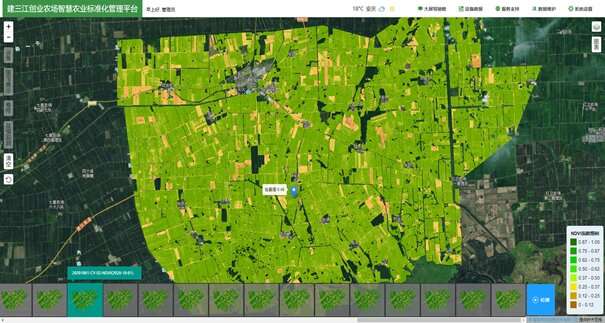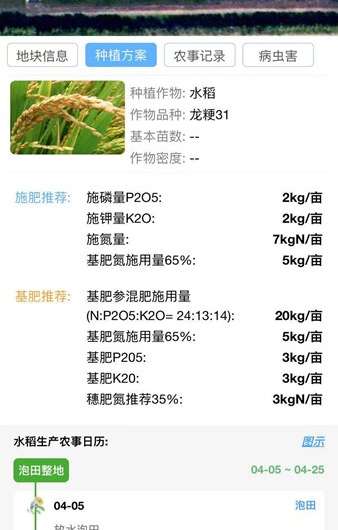
The Northeast China region is home to the majority of China’s fertile black soil. This area has been identified as critical for Chinese food security. The soil is in critical condition because of years of intensive fertilizer production and overuse.
The Sinograin II international collaborative project, which is supported by the Royal Norwegian Embassy, Beijing, supports Norwegian scientists from NIBIO and Chinese agricultural scientists to improve food safety. Scientists developed a service-oriented system to support farmers and local governments in North-East China. It provides timely recommendations on certain agricultural practices, such as site-specific fertilization.
WeChat is very popular
“The system includes a detailed web version for agricultural technicians, extension service providers, and a WeChat edition for farmers. Krzysztof Kubierek, scientist at NIBIO, says that WeChat is very popular in China and that farmers will use it.
China is the largest producer, importer, and consumer of chemical fertilizers in the world, accounting for more than 30 percent of global nitrogen (N) fertilizer consumption. Mismanagement of N fertilizer can be a problem. The Chinese government is well aware of these challenges and encourages better practices to be followed to preserve black soil and increase food security.
“My Chinese colleagues tells me that this is critical. Kusnierek says that the government is putting pressure upon local authorities to improve practices. This means they are forced to do so and there is financial resource.”
It was also crucial in relation to the development and maintenance of the decision support tool in this project: “The barebones for our service providing system were created by Hainie Zha (a Ph.D. student from China Agricultural University) in collaboration with many programmers from an external company. This work was possible because funding was available from multiple sources, in addition to the project. It has become something greater than what could have been possible with funding only from our research project. Now, science can be implemented. He says it is a tool that allows research to reach the people.”
Nitrogen management
Kusnierek explains that NIBIO’s contributions have been focused on scientific research, collaboration in building agronomic model, and involvement in the implementation.

“In the system, precision nitrogen management is made possible by remote sensing technology that allows for site-specific application. He says that we contribute to reducing nitrogen use, protecting the environment, and sometimes increasing yield.
Kusnierek says that there is a lot of variation in soil resources within the region. “Some areas need more fertilizer than other.” Up until a few decades ago, there was no regional recommendation on how much fertilizer should be applied. Many farmers used this amount. A single recommended value for a large area did not take into account variations in soil properties. If you have the technology to show the variability, you can recommend fertilizer amounts for each place, tailored to each farm’s soil conditions. Problems such as soil degradation and over-fertilization are common across the globe. He said that it is rewarding to share our knowledge and technology with each other.
Simple and quick
The development of the system was centered on the important agricultural region in Heilongjiang Province in Northeast China. NIBIO-scientists report that some farmers have already started to use the app during the current trial period.
“The satellite image is used to create the base map and farmers can draw the boundaries of their fields. They can also provide information about their production system. These data are used to query the database for soil, weather, and remote sensing data. Clicking on the plot will display information in a pop up window about the current growth status of the crops. Kusnierek explains that you can also generate the N-PK fertilization plan according the target yield. This is converted into the amount fertilizer product necessary.
The NIBIO scientist says that there are plans for large numbers of sensors to be deployed in fields to collect microclimatic data such as temperature and soil moisture. These data will all be gathered and compiled into a common system which will be made available to the public.
“This large dataset is accessible to one user as a small piece software that is within WeChat. He simply taps on the item to use it.”
The scientists plan to continue improving the system: “We are now discussing how we can optimize the technology even further.” The minimum and maximum reference areas should be available to farmers in order to fine-tune the recommendations. We want to use drones more often in the region to collect data. It is also possible to expand the system in other areas and possibly for other cultures.
“It’s been wonderful to see that complex agronomic models could be converted into an accessible product,” he said. He also highlighted the importance of local authorities supporting the project. We can see that it’s slowly starting to be used. He concludes, “What we do has an effect.”
Per Stlnacke is the head of research at NIBIO. He says that international collaboration in research is crucial for global food security. “To solve global food production and security it’s of paramount importance that we collaborate across borders, to identify best-practices, and tools. The Sinograin II collaboration between scientists at NIBIO with the Chinese partner has clearly had an impact. The tool will help farmers make better decisions about their farms. It will enable them to choose the most efficient inputs, as well as to respond to weather changes and market changes with greater effectiveness.
Low-cost soil sensors using AI could be used to reduce fertilizer use by farmers
Provided by
Norwegian Institute of Bioeconomy Research
Citation:
WeChat app for improving agriculture practices in China (2021, 20 December)
Retrieved 20 Dec 2021
from https://phys.org/news/2021-12-wechat-app-agriculture-environment-china.html
This document is subject of copyright. Except for any fair dealings in private study or research, this document is not subject to copyright.
Without permission, part may be reproduced. The information is provided only for information purposes.
